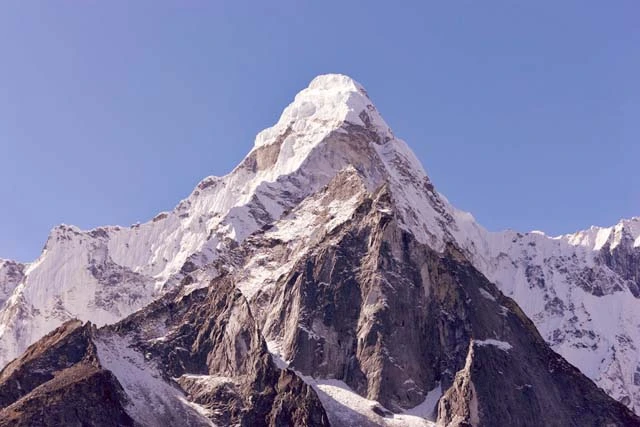The title of the highest mountain in the world is not just a geographical fact but a symbol of human ambition natural wonder and a subject of great scientific interest. This article provides an in-depth exploration of various facets of this natural marvel its significance and the challenges it presents.

Geographical Overview
The highest mountain in the world is Mount Everest. This towering giant is part of the Himalayas and straddles the border between Nepal and the Tibet Autonomous Region of China. Its official height as of 2020, is 8,848.86 meters (29,031.7 feet) above sea level. This peak arising from the collision of the Indian and Eurasian tectonic plates continues to grow each year due to geological forces.
Historical Context
Mount Everests history is as towering as its height. Named after Sir George Everest in 1865, it is locally known as “Sagarmatha” in Nepal and Chomolungma in Tibet. The first recorded attempts to climb this highest mountain in the world date back to the early 1920s. The successful ascent in 1953 by Sir Edmund Hillary and Tenzing Norgay is not just a milestone in mountaineering but a testament to human determination.
Cultural and Environmental Significance
The highest mountain in the world holds profound cultural significance. For local communities it is more than a mountain; it is a sacred entity. The Sherpa people renowned for their mountaineering skills have deep spiritual connections with Everest. Environmentally Everest offers a unique ecosystem and is a barometer for climate change studies as the variations in its snow and ice patterns offer clues about global warming.
Mountaineering and Its Evolution
The journey to climb the highest mountain in the world has evolved significantly. What started as an expedition led by a handful of adventurers has now turned into a more accessible yet still challenging endeavor. Technological advancements, better gear and improved weather forecasting have contributed to this evolution. However the mountain still demands respect’ the ascent is fraught with dangers like avalanches, crevasses and the dreaded “death zone” above 8,000 meters.
Challenges and Controversies
The climb to the highest mountain in the world is not without its challenges and controversies. Issues such as overcrowding pollution and the commercialization of expeditions have raised concerns. The ethical implications of using supplemental oxygen and the risks to the Sherpa guides are also subjects of intense debate.
Sustainable Mountaineering Practices
In response to these challenges, there is a growing emphasis on sustainable practices in mountaineering. This includes implementing stricter regulations managing waste and respecting local traditions and communities. These practices aim to ensure that the majesty of the highest mountain in the world can be preserved for future generations.
Conclusion
Mount Everest the highest mountain in the world, remains a beacon of awe and inspiration. It symbolizes the extreme limits of nature and human endeavour. As we continue to explore and interact with this magnificent peak it is crucial to balance our ambitions with a commitment to preservation and respect for its natural and cultural heritage.
FAQs
What is the exact height of the highest mountain in the world
Mount Everests latest recorded height is 8,848.86 meters (29,031.7 feet).
When was the first successful ascent of the highest mountain in the world
Sir Edmund Hillary and Tenzing Norgay made the first successful ascent on May 29, 1953.
What are the unique environmental aspects of the highest mountain in the world
It features a unique high-altitude ecosystem and is a crucial indicator of climate change effects.
What are the main risks involved in climbing the highest mountains in the world
Risks include extreme weather altitude sickness, avalanches and physical exhaustion.
How is sustainable mountaineering being promoted on the highest mountain in the world
Through stricter regulations waste management and respecting local cultures and environments.


